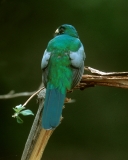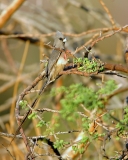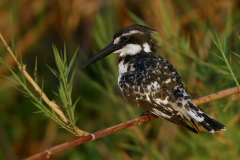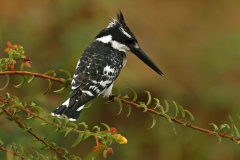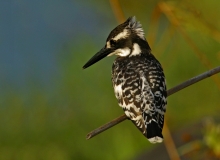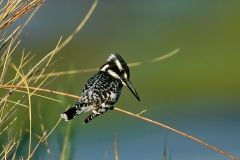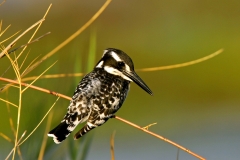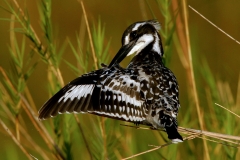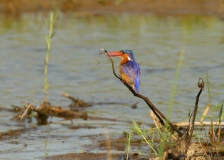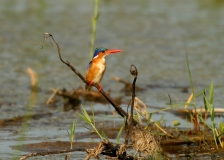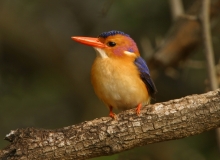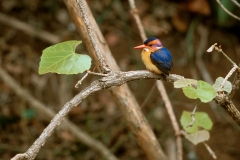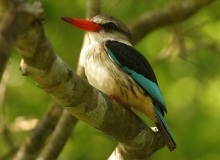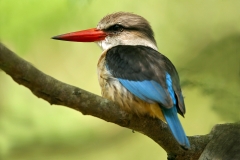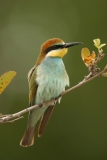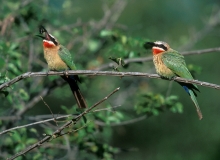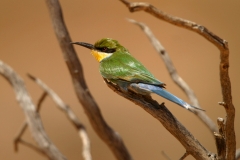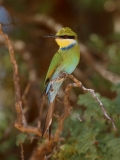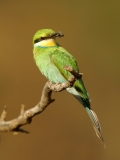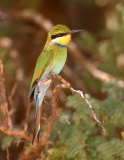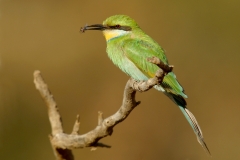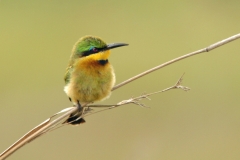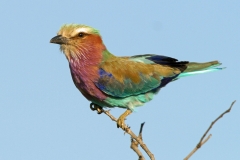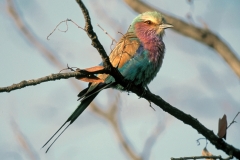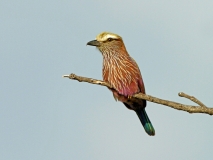African Trogons, Kingfishers, Bee-eaters & Rollers
Trogons, kingfishers, bee-eaters and rollers – Africa has them all! Each of these family groups are very exciting birds to photograph. They are among the most stunning in color and they are very interesting in their behaviors.
There is only one trogon in Southern Africa, and we got only one shot of it while at Ithala Park in KwaZulu-Natal. The bird was true to its advertised behavior. It perched with its emerald green back to us in dense foliage. It did not remain in place for long. The second shot of it captured only the tail as it departed from the area.
The kingfishers, however, were more easily photographed. Of the ten present in Southern Africa, we saw seven. One of the ten we did not have an opportunity to capture was the one we might have wanted most – the giant kingfisher. The pied kingfisher gave us several great photo shoots. They seemed quite tolerant of humans. We found them perched on riverside shrubs or grasses, or hovering to dive for prey. The malachite kingfisher was photographed in a similar habitat. The non-aquatic kingfishers were more approachable. Of these, we saw the striped kingfisher and photographed the brown-hooded. One of the most treasured images we took away from Africa was one of Terry’s first digital camera captures. It was of the African pygmy kingfisher. You will find it in the attached gallery.
The European bee-eater was simply exotic in color and form. The white-fronted bee-eater was photographed at its colony in the steep sandbank of a river. There were dozens of birds perched in the burrow openings and others were fly-catching their meals. The swallow-tailed bee-eater was a splash of color at Kagalagadi in the Kalahari Desert. But the little-bee-eater photographed near Cape Vidal on the southern coast was the real charmer of them all.
Finally, this gallery contains the beautiful lilac roller and the purple roller. Birds in those color ranges are bound to hold your eye. All of these – trogons, kingfishers, bee-eaters and rollers were of high interest on our list of birds to photograph in Africa.
